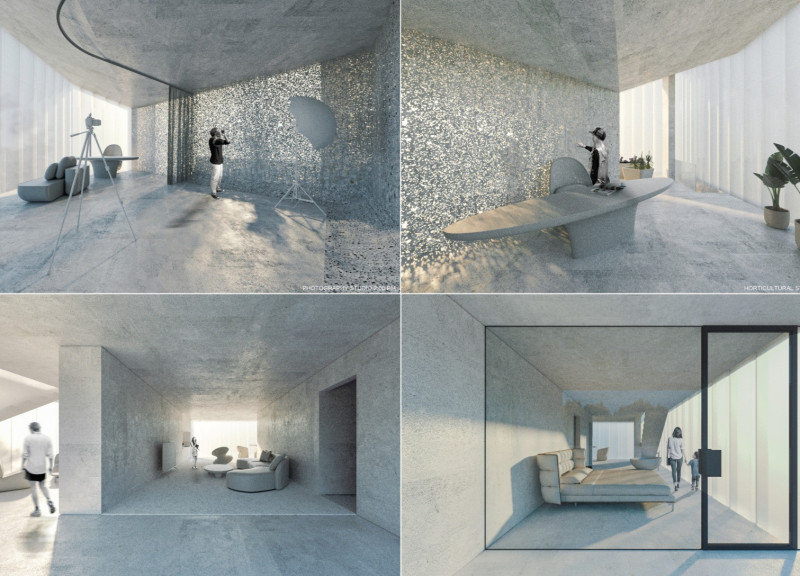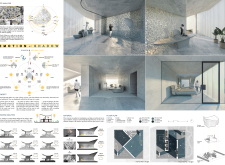5 key facts about this project
The design located in Shenzhen addresses the challenges of the subtropical climate, where sunlight can be abundant and intense during the hot summer months. It serves as a home and workspace for both a photographer and a horticulturist. This setting combines artistic living with practical functions, reflecting a design concept that focuses on the relationship between light and shadow to create a balanced environment.
Light and Shadow Dynamics
At the heart of the design is the exploration of how light and shadow interact within the space. As sunlight moves across the sky, it influences the atmosphere inside the residence. In the morning, light fills the girl’s studio, creating soft reflections on the surfaces, while the afternoon light shifts to the boy’s studio, bringing a different quality of illumination. This changing light plays a crucial role in shaping daily experiences and emotional connections to the space.
Functional Layout
The layout of the residence carefully separates private areas from shared spaces. This separation is accomplished through the strategic placement of walls, which form distinct zones, including a bedroom, living room, kitchen, dining room, garden, teahouse, horticultural studio, photography studio, shower room, toilet, storage, and stairway. Each area is designed to fulfill specific functions while still allowing for visual connections, encouraging interaction among the inhabitants.
Materiality and Construction
Fiber concrete is the primary material utilized in the design. Known for its adaptability, it manages light in a way that contributes to the overall experience within the spaces. Its ability to filter light enhances both function and aesthetics. The material's characteristics allow it to create shadows and reflections, adding depth and complexity to the interiors as light shifts throughout the day.
The design reflects an understanding of the local context and the needs of its inhabitants. It emphasizes how light can create different moods and experiences within a home. By balancing privacy with openness, the residence provides areas for both solitude and togetherness. This careful attention to detail makes the living environment not just a place to reside, but a space that nurtures creativity and connection.



















































